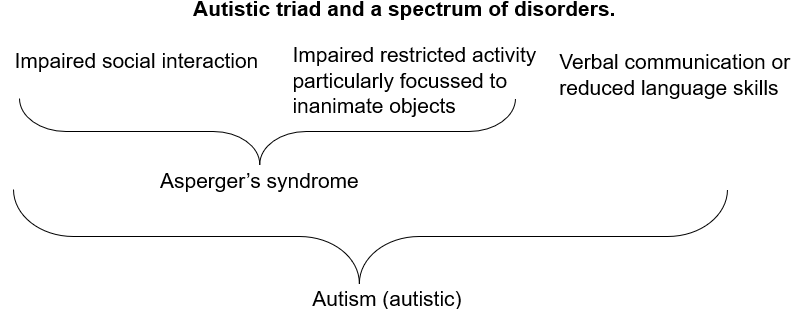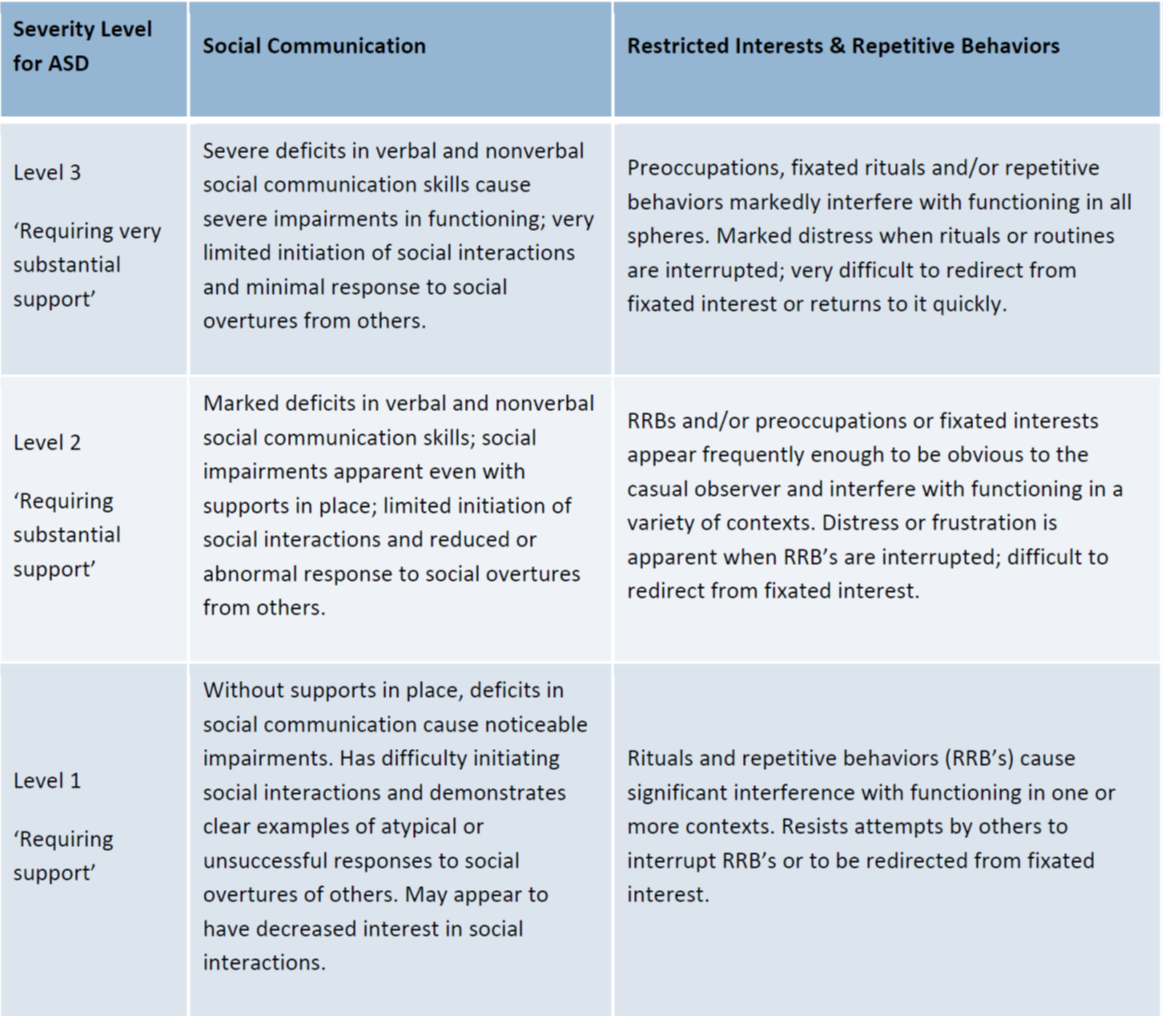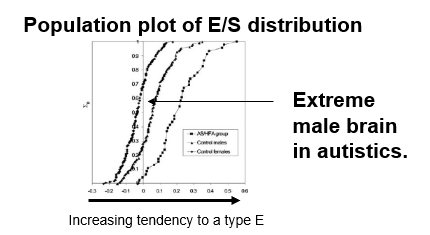Autism
1/7
There's no tags or description
Looks like no tags are added yet.
Name | Mastery | Learn | Test | Matching | Spaced |
|---|
No study sessions yet.
8 Terms
Characteristics
Those who have autism are described as neuroatypical, as opposed to neurotypical (may have other neuropsychiatric conditions)
Long way away from treatment, some people may not want treatment
Defined as a pervasive developmental disorder à emerges during neurodevelopment and remains with an individual across their lifetime
Huge spectrum of traits associated with autism à makes it a challenge for diagnosis
A whole range of expression of normal human behaviour, but the constellation of their expression which results in its expression
Brain disorder à the symptoms originate from a difference in brain function
Highly genetically penetrant but largely polygenic (most genetically penetrant of psychiatric conditions)
Synaptopathy – dysfunction, disruption and change in synaptic function underlying the autism traits
Therapeutic treatments often treat the symptomologies rather than the underlying disorder
Historical aspects
Leo Kanner describes a cohort of children (early developmental effect) with stunted communication and social interaction
Motor behaviour disrupted and locked into repetitive behaviours
Aspergers – diluted version of Autism where the traits are less disrupted but less emphasis on language dysfunction
3 things that seem to define autism:
Impaired social interactions relevant for a young child
Repetitive restricted behaviours
Associated reduction in language skills

Autism as a developmental disorder
Development can mature over time à can initially receive a diagnosis of autism but can be better defined by other syndromes
Early diagnosis features don’t show the same trajectory in adulthood
Ability to describe the cognitive dysfunction a confound for achieving a diagnosis
Some defined syndromes where autism traits are present: Rett’s and Fragile X
A syndrome is when there's a single gene which repeatedly gives rise to a genetic disruption and an associated disease profile
Previously Rett’s and fragile X provided a good experimental platform for studying autism but as the genetics have been better understood in the previous years, shift away from using them as definable models of autism
Similar to how syndromes can help us identify single penetrant genes, the number of single gene genetic disruptions associated with autism has increased, the most common being Syntaxin binding protein 1
10 in 10,000 – quite prevalent
Some disorders like Heller’s childhood disintegrative disorder, can appear like autism in childhood but throughout development can progress in a much more cognitively disrupted individual. Symptoms can present in facial features as individual gets older.
Diagnostic manuals
Based off three main criteria:
Persistent deficits in social interactions across different contexts
Deficits in social, emotional reciprocity à when children come together at a young age one will give, the other will take and vice versa
Deficits in non-verbal communicative behaviours à E.g: eye contact
Difficulties developing and maintaining relationships à E.g: difficulties adjusting behaviours to suit different social contexts
Restricted repetitive patterns of behaviours, interests or activities
Stereotypes or repetitive speech
Excessive adherence to routine à may present as excessive resistance to change or extreme distress to small changes
Highly restricted, fixated interests
Hyper or hypo reactivity to sensory input or adverse response to specific sounds or textures is a recently emerging component of the diagnostic manual
Symptoms must be present in early childhood but may not fully manifest until adulthood
DSM-5 perspective on the spectrum of disorders

ased on where you lie in the spectrum the requirements to help you through life will increase: Based
When does neurotypical become neuroatypical
supposedly more prevalent and more often diagnosed in the male population. Suggestion is that females are better at empathising, whereas human males are supposedly better at understanding non-agentive things (systemisation).
Based off a population plot of E/S distribution
Increased systemisation, reduced empathy in autistic individuals à somewhat reflection of personality
These are measuring neurotrypical traits, that when added together make you more likely to get an autism diagnosis
If you express these traits in an extreme way can cause lifesytlc challenges and make day to day living more challenging

Attempts to understand why women are less likely to express autism
Increased white matter and local neuron connections suggesting that processing was more localised and less able to empathise
Females on the other hand have a more even distribution of connections
Theories around prenatal androgen expression which may be ore likely to give rise to different phenotype in males as androgen production can impact on early brain development
Addressing autism in females
Diagnosis is more biased towards male traits à to be neuroatypical, you would be expressing traits you would be more likely to be expressed in males
More likely to mask the social issues and behavioural traits
Most of the experiments based on male cohorts à For example: depending on where you are in the oestrogen cycle may affect anxiety state and so doing experiments with these contributing factors can be misleading
Not comparing the sex differences may be misleading, favouring the diagnosis in the male population